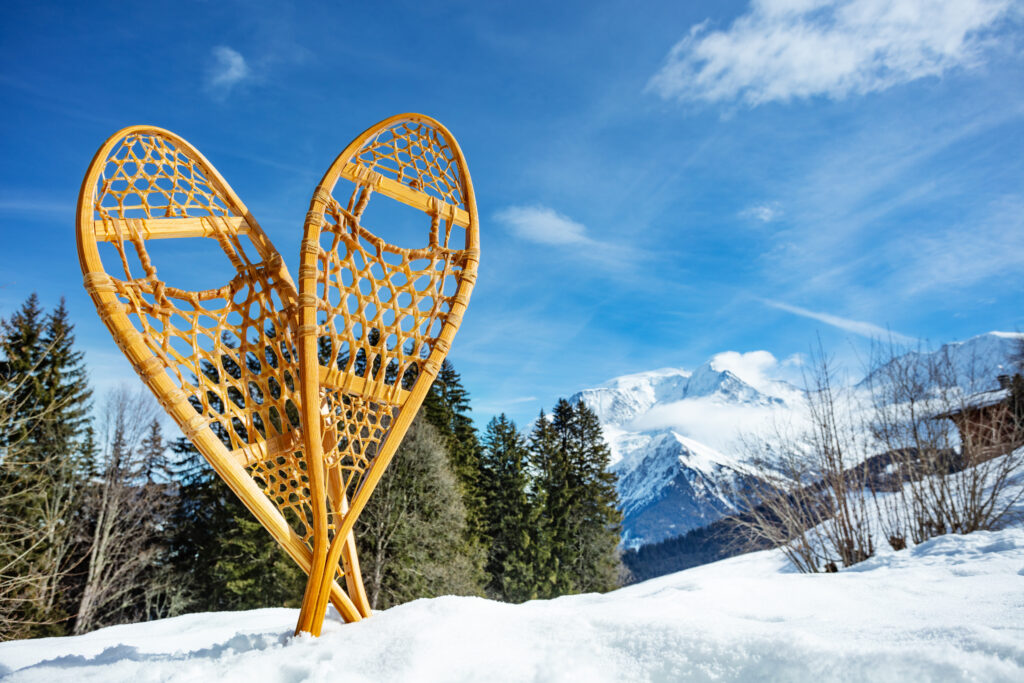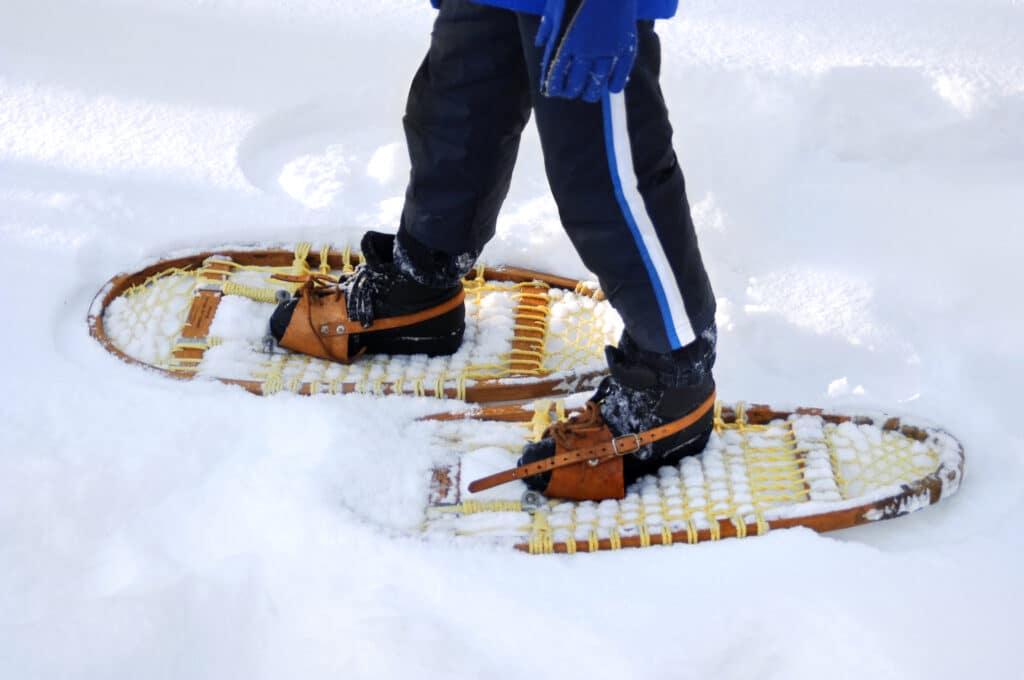This simple Santa STEM challenge teaches kids about the physics of snowshoes in a fun and hands-on way. The challenge is to design a snowshoe for Santa to help him cross the snow to reach his sleigh!

How do snowshoes work?
Snowshoes have been used for thousands of years to allow people to walk on large amounts of snow without sinking.
You’ve probably walked in fresh snow and made footprints, but imagine if the snow was much deeper, it’d be almost impossible to walk through, which is why people invented snowshoes 1000s of years ago!
The science behind the snowshoe is all about surface area and pressure. A snowshoe has a surface area bigger than a person’s foot and a normal shoe, so it spreads the load of a person’s body weight over a larger area, reducing the pressure on the snow.
Different sizes and shapes of snowshoes are good for different conditions.


Santa STEM Challenge – Make a snowshoe for Santa
Oh no! Lots of snow has fallen, and Santa can’t reach his sleigh. Can you design and make a snowshoe to help him walk over the snow?

What’s the challenge?
The challenge is to design and build a snowshoe for Santa, thinking about the size and shape of the shoe and the materials to use. The snowshoe should be waterproof, strong, bigger than a normal shoe and lightweight!
It’s tricky to build a real snowshoe, but children can build a prototype using recycled materials while thinking about what material they would use for a real snowshoe.
Ideas for materials to use to build the prototype
String
Straws
Kitchen foil
Pipe cleaners
Newspaper
Tape
Use the free activity sheet
Animal adaptations – Snowshoe Hare
The snowshoe hare has several adaptations to help it survive in its environment. Its fur can change colour. The hare is red/brown in summer and white in winter to blend in better with the surroundings of the time.
You can probably guess the second adaptation from the name. Snowshoe hares have large hind legs and bigger toes than other similar animals. Their feet are like a natural snowshoe, allowing them to walk over snow more easily!


Last Updated on November 29, 2023 by Emma Vanstone


